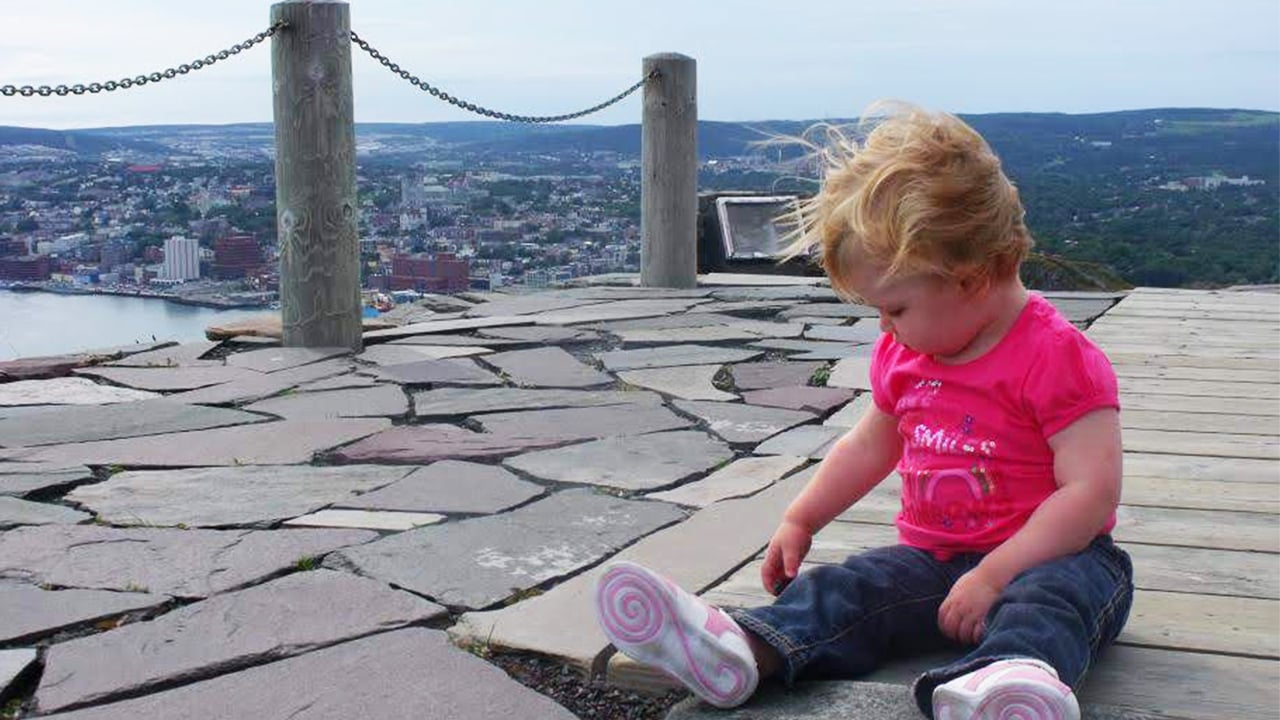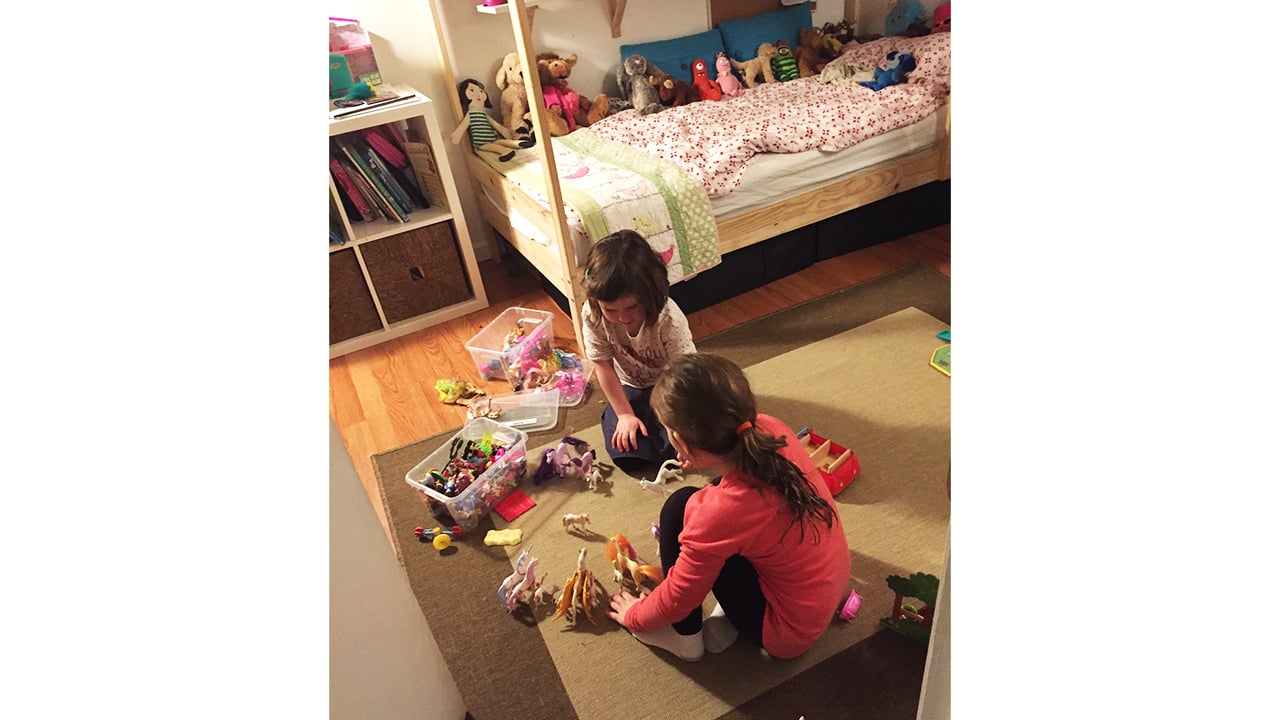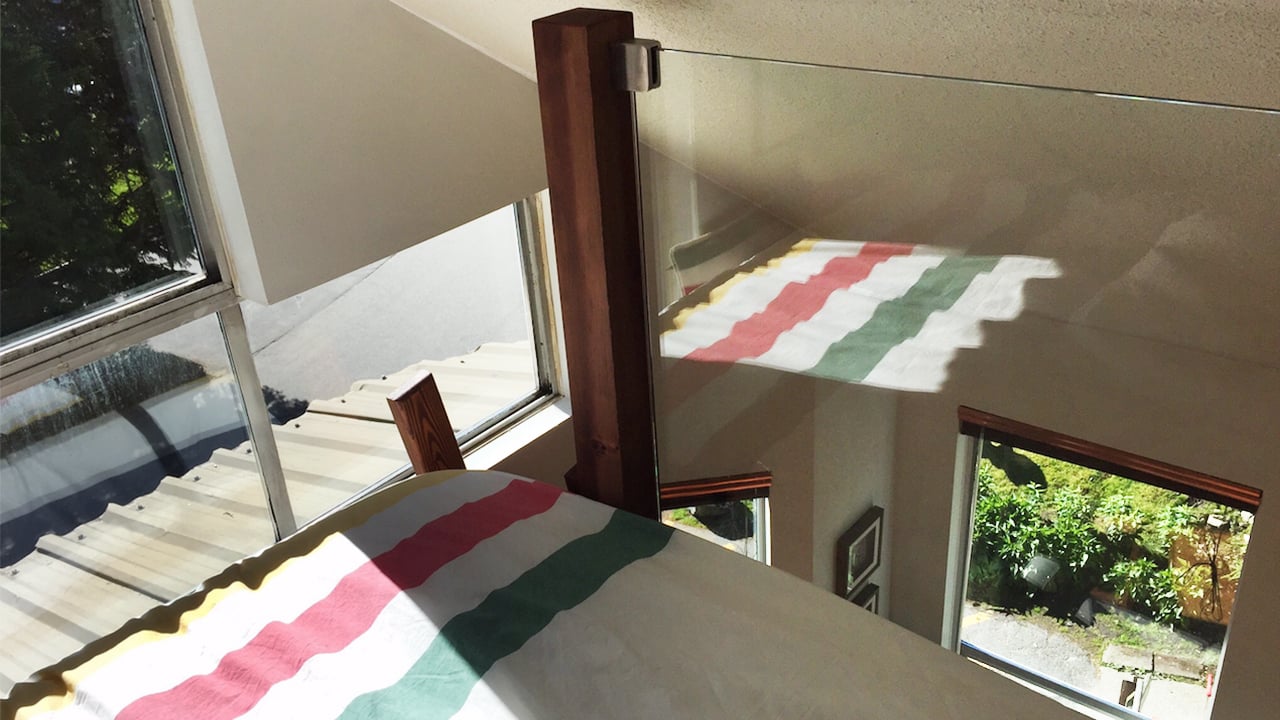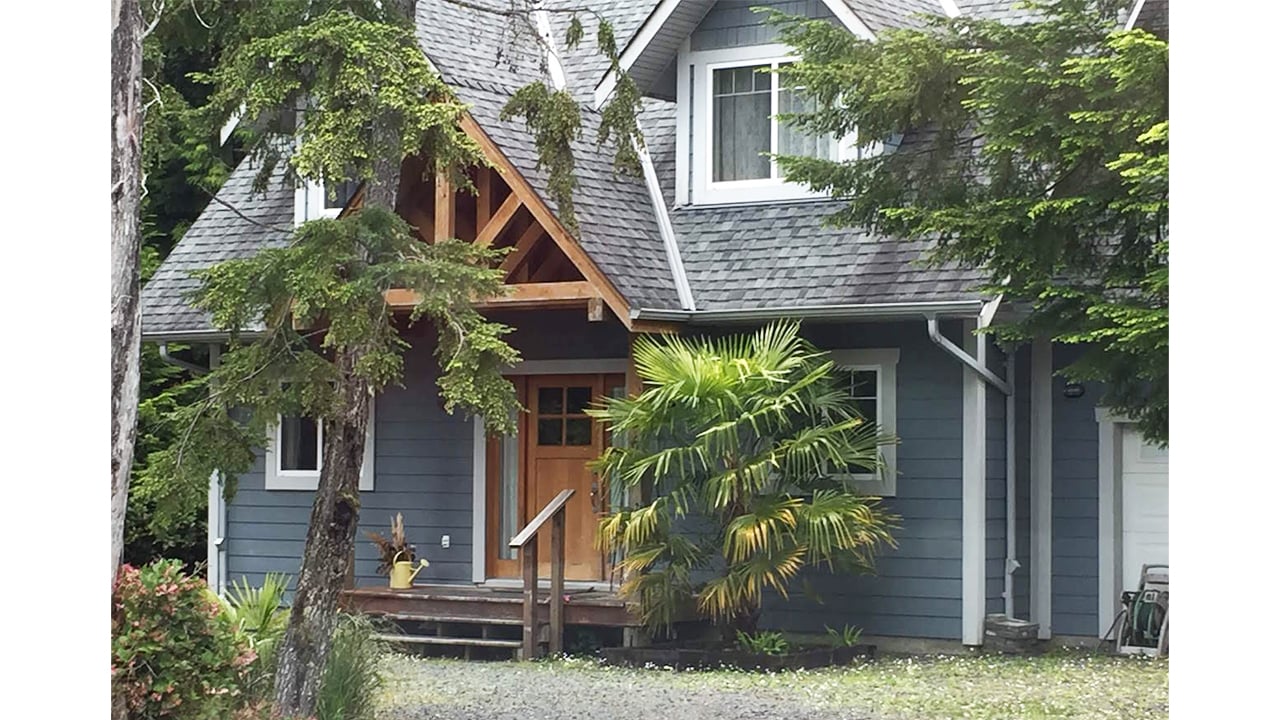I reach my arms into a pile of damp clothes and groan. Yet again, our ventless condensation dryer has failed to do its job. The clothes will have to hang to dry.
The problem is, our laundry room also serves as a shared bedroom for my two daughters, the only closet and storage space for our family and a playroom. It’s snowing outside and there really isn’t anywhere left for a drying rack since our entire home is just 400 square feet. My husband and I don’t even have a bedroom, just a mattress-sized loft space perched above our kitchen and living room space. Our running joke is you can sit on the living room sofa while frying bacon in the kitchen.
This is tiny house living, and it’s not exactly the Instagrammable lifestyle that’s portrayed on TV and in magazines. Trust me, we tried it all, sojourning across Canada for nearly a decade, looking for the perfect home.
The journey to tiny
In 2008, discouraged by Vancouver’s skyrocketing real estate prices, my husband and I decided to leave the city, driven by a desire for an affordable single family home.
We bought a 2,000-square-foot, two-car garage home on the west coast of Vancouver Island, and it felt like the perfect “starter” home. As children of the ’80s, we both grew up in spacious suburban homes and had no reason to doubt this would work for us the way it did for our parents.
Our first home on Vancouver Island. (Photo taken a decade later.) Photo: Courtesy of Gillian Robinson Riddell
That dream home put us on equal footing with most Canadians. Since the 2000s, the average house size has gradually increased to 2,000 square feet—a far cry from how our grandparents lived. Pre-1946, the average home in Canada was just 1,300 square feet and housed around eight people. Today, our more spacious homes shelter an average of just 2.5 people.
While the house made us feel like grown-ups and life in a smaller town was more affordable, there were trade-offs. Healthcare, job opportunities and services were all limited. So when a job came up in Toronto, we decided to give big city life a try.
We didn’t know it then, but we were about to embark on a decade-long journey that would lead us across Canada like a pair of modern-day Goldilocks. We tried single family homes, urban high-rises, suburban townhouses and a teeny tiny home before discovering what “just right” meant for our family.
Trying out everything
In Toronto, we settled into a smaller semi-detached on the Danforth, with a postage-sized backyard. We happily traded parking and space for access to big-city amenities and a vibrant, walkable neighbourhood. But when another job opportunity for my husband came up in Ottawa a year later, the lure of even greater affordability and a less-urban lifestyle brought us to Wakefield, Quebec.
We moved into a spacious townhouse with a ridiculously large master bedroom, cavernous bathroom with double sinks, soaker tub and a separate shower and a kitchen with a big eat-at island. On maternity leave with a newborn daughter, I fell in love with the small town 30 minutes away from Ottawa.
But change was in the air. My husband Marc and I met in a newsroom while working for one of Canada’s national newscasts. In broadcast news, most editorial plans change before you finish your first coffee, which explains our “why not?” attitude to trying out new lifestyles across the country. We were always up for the next big story. So two years later, when another job came up in St. John’s, Newfoundland, we went for it.
When I was eight months pregnant with our second daughter, we rented a four-bedroom single-family home with a purple front porch in downtown St. John’s and settled in as “Come from aways.”

My favourite photo from our time living downtown in St. John’s. Photo: Courtesy of Gillian Robinson Riddell
Getting tinier
Now a family of four and with household full of “stuff” we’d collected across the country, we realized we were living on the wrong coast. Eventually, a job offer back in Vancouver came up, but it didn’t include moving expenses. The cost of moving a large household from St. John’s to Vancouver runs into the tens of thousands of dollars. The most cost-effective way to move our stuff would be to not move it at all. Years ahead of Marie Kondo’s “Does it spark joy?” movement, our keep it or lose it philosophy was more practical—“Do I need/want this enough to pay to move it?”
Having sold or donated nearly everything, we landed in Vancouver with just the essentials—two suitcases with our clothing, two children, a stroller, cat, dog, surfboard and skis. Downtown life came with the perks of not needing a car, walking to work and Stanley Park. However, our biggest challenge was childcare. We had a fantastic nanny, but our childcare costs were more than rent and food combined.
Tiny house life
We’d managed not to accumulate many belongings while living in the high rise condo, which made our next move to a 1,000-square-foot townhouse that we rented in Burnaby, a Vancouver suburb, our easiest yet. To be able to enjoy the outdoors—the reason we’d moved back out west—we bought an investment condo in Whistler. At 425 square feet, it was a perfectly functional space for a family spending most of the day on the ski hill, lakes and trails. And the more time we spent there, the more we started to realize just how little space we needed to get by.
A couple of years later, my employer was downsizing. With severance packages looming, we joked about moving to the tiny condo full-time. Our “why not?” mentality kicked in again.
We decided to make the move to Whistler full-time.
Our tiny condo boasted one bedroom that fit a bunkbed for the girls, a chest of drawers, compact stackable washer and dryer and a closet that also served double duty for our hot water tank and all the clothes that didn’t fit in the drawers.
De-cluttering experts estimate the average family home has more than 300,000 items. We were already minimalists post-Newfoundland, but tiny house living made us even more disciplined. Toys were strictly limited and confined to the girls’ bedroom and “use it or lose it” became our new mantra. I would not have struggled if I’d tried to count every single item in our space.

Play in our tiny home was limited to small toys and the girls’ bedroom was also our only closet and laundry room. Photo: Courtesy of Gillian Robinson Riddell
A bit too tiny
In many ways, tiny house living does live up to hype.
We could keep our home comfortably warm in winter and still had energy bills well below the Canadian average. It never took more than an hour to do a top-to-bottom clean. Even though Whistler is one of Canada’s most expensive housing markets, our mortgage payment was reasonable. And we realized that most of the time when we were all home together, our family (including the dog) congregated in just 20 square feet—on the sofa.
That said, there were challenges. We had no place to sort, hang or fold laundry. And with no microwave or dishwasher in our miniscule kitchen, we ate out a lot more.

The loft space above our tiny home’s kitchen and living room was just big enough for a queen-sized mattress. Photo: Courtesy of Gillian Robinson Riddell
Right sizing
After 16 months in our tiny home, we were ready for bit more breathing room, and we bought a 920-square-foot townhouse nearby.
Over almost decade, we tried out 10 homes—urban, suburban, rural, condominiums, townhouses, single family homes, 400 to 2,000 square feet. But this one is just right. It combines attributes we loved about our previous homes—affordability, the ability to top-to-bottom clean it in an hour, a warm and welcoming community, walkability to shops and restaurants, with the added perk of being able to ski home after a day on the mountain.

Our house may be smaller than average but our backyard is a pretty decent size. Photo: Courtesy of Gillian Robinson Riddell
And most nights you will still find us gathered in just 20 square feet, including the dog, in a place that we love, that fits us perfectly.
This article was originally published in July 2019, updated July 2020.
